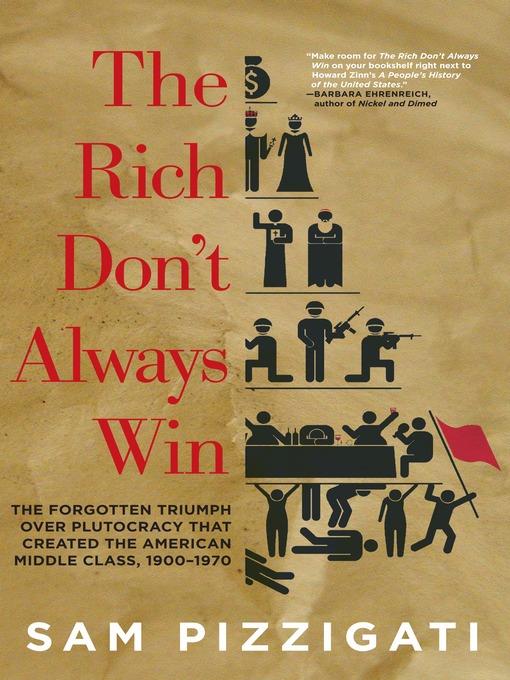
The Rich Don't Always Win
The Forgotten Triumph over Plutocracy that Created the American Middle Class, 1900-1970
کتاب های مرتبط
- اطلاعات
- نقد و بررسی
- دیدگاه کاربران
نقد و بررسی

November 12, 2012
Labor journalist Pizzigati (Greed and Good: Understanding and Overcoming the Inequality that Limits Our Lives) brings a distinctly progressive sensibility to his examination of the economic history of 20th-century America. Beginning with historian Frederick Lewis Allen's observation that between 1900 and 1950 the super-rich vanished from the United States, Pizzigati traces the economic policies and political decisions that led to this diminishment, and then applies the same methods to the recent return of the "Big Rich." "Our overall economic output has doubled over the last thirty years, yet our middle class families are reeling, and our numbers of desperately poor families are rising to record levels by modern standards." Pizzigati reviews the introduction and evolution of estate and income taxes, FDR's proposed income cap, the immediate post-WWII "economic turmoil," and the Treaty of Detroit that balanced good benefits for auto workers with labor peace for auto makers. All this helped create the "middle class golden age" of the 1950s and 1960s. Though some readers may disagree with Pizzigati's take on history, his suggestions for ways to increase economic equalityâsuch as " our maximum tax rate to the minimum wage so the wealthy have an interest in preventing poverty"âdeserve discussion.

August 1, 2012
Labor journalist Pizzigati (Greed and Good: Understanding and Overcoming the Inequality that Limits Our Lives, 2004, etc.) makes the case that graduated tax rates and strong unions once led to an economic golden age for average Americans--and could do so again. The author focuses on how, since the end of the 19th century, a massive economic gap between the rich and poor in America has sparked populist and progressive ideas. The resulting legislation and regulations, he writes, brought about changes that greatly improved the lives of many Americans by mid-century. But as Pizzigati shows, many of those policies and institutions were weakened or eliminated in later decades, and economic inequality has since grown. By revisiting and reinvigorating those ideas--such as steeply raising taxes on the wealthy--he argues that the gap could be narrowed once more. The author gives due attention to several major historical figures, most notably Franklin D. Roosevelt, but Pizzigati also name checks less-discussed individuals, such as attorney and reformist Amos Pinchot and Colorado congressman Edward Keating. The author also delves into complicated labor history and tax law, examining the many victories and defeats of progressive-leaning policies. However, Pizzigati has an unfortunate tendency to broadly demonize the rich, at one point even taking issue with the wealth of doomed passengers on the Titanic. He is undeniably passionate about his subject and skilled at marshaling information to make his points, but the book seems largely aimed at like-minded readers and may not change the minds of skeptics. A flawed but ambitious, readable look at economic reformism over the last century.
COPYRIGHT(2012) Kirkus Reviews, ALL RIGHTS RESERVED.

























دیدگاه کاربران